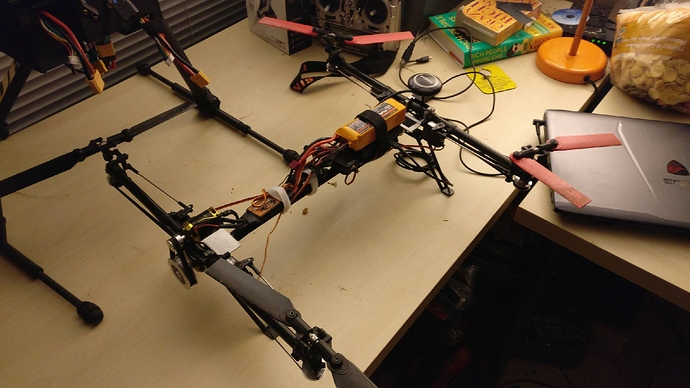But cyclic has everything to do with it. Refer to your basic helicopter training manuals. The rotor has three distinct regions - driven (near the blade tips), driving (center section which provides the lift), and stall (which is drag).
During autorotation the driven and driving region shifts to the advancing side of the rotor disc, the stall shifts to the retreating side. What drives those blade tips is difference in AoA as it is lower on the advancing blade (creating less drag and more power), higher on the retreating side (creating more drag). Critical to autorotation is direction of the induced flow in the rotor and clean air to make it work. The cyclic pitch drives and stabilizes the machine, the collective pitch controls rotor speed and descent rate.
You can not autorotate a multi-rotor helicopter because in vertical descent the fuselage blocks induced flow. The front rotor blocks the induced flow on the rear and it stalls. It is not a windmill being driven by paddles. It is a flying wing that rotates. In powered flight the induced flow comes from above and that is why the CH-47’s rear rotor is higher than the front one.
During the flare you use the kinetic energy provided by forward speed to reduce your descent. With zero airspeed you completely lose this form of stored energy. Look at the aerodynamics of the flare, which is the critical stage of autorotation. The induced flow suddenly changes along with the lift vector on the disc. What happens to the cyclic when you add up elevator? Keep in mind the collective management right here is critical - the blades remain collective-feathered in the flare to preserve stored kinetic energy in the rotor system - because you’re going to seriously need it in the final stage of touchdown.
When you add the up elevator with the cyclic the advancing blade (still being the primary driving force) shifts the lift vector of the disc to the rear and converts the forward motion to stored energy in the rotor system. This is where maximum rotor speed is achieved. In addition there is a severe inbalance in the symmetry of lift on the disc during the flare so it requires significant aileron towards the advancing blade and then correction back to level at touchdown.
A collective-only control system is not capable of this. It cannot operate the blades at the changing angle of attack in the cycle, required to convert the forward kinetic energy to stored rotational energy in the rotor as the induced flow changes in the flare.
Autorotation in a normal helicopter is a total non-event once the pilot learns how to do it. It is easily 5x safer than landing a fixed-wing with no power because helicopters can bring the differential speed between the machine and ground (where all crashes end up) to zero before touchdown.
But the fact remains that a multi-rotor system has too many rotors that are too small to store any significant inertia. None of them are operating at the ideal angles of attack to perform a successful autorotation because they’re all operating in different planes of rotation, don’t have the clean induced flow required, and don’t have the proper energy management system to convert motion to stored energy - they are using collective for everything, which does not work.
The helicopter is a time-proven design that has stood the test of time for over 70 years. Then the multi-rotor people came along in RC and suddenly it’s the best thing since sliced bread. Except it’s not. The multi-rotor lift system has all kinds of leaks in it. It doesn’t actually fly - it is proof of concept that if you strap enough horsepower to a battery you can make a battery become airborne. It is the most inefficient airborne device ever created by the human race. Whether you change the differential thrust by changing blade pitch on the corners, or changing speed, doesn’t change its aerodynamics. It not in any way shape or form related to a helicopter.




